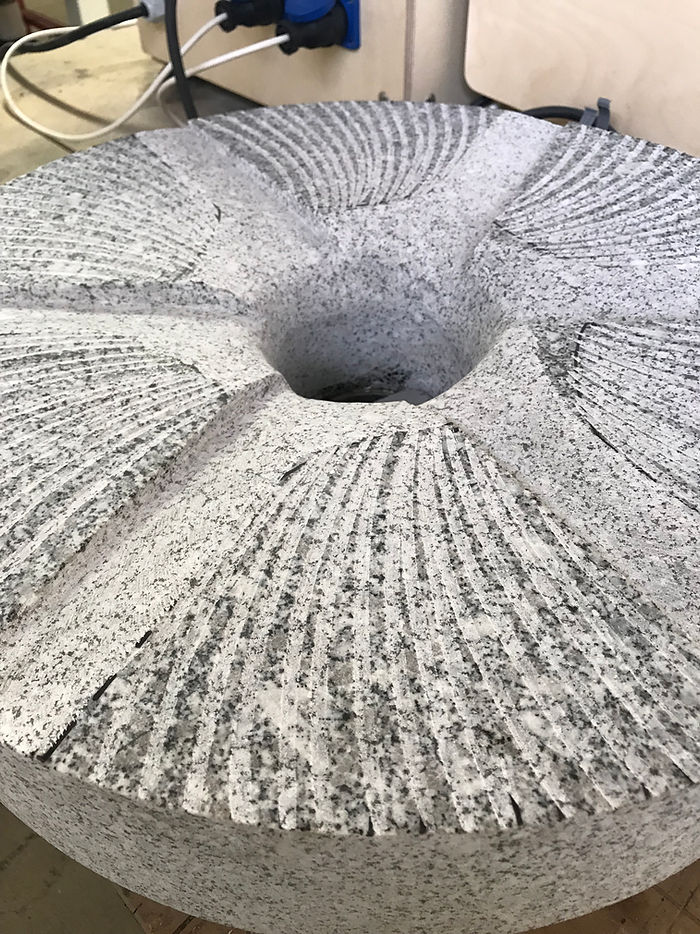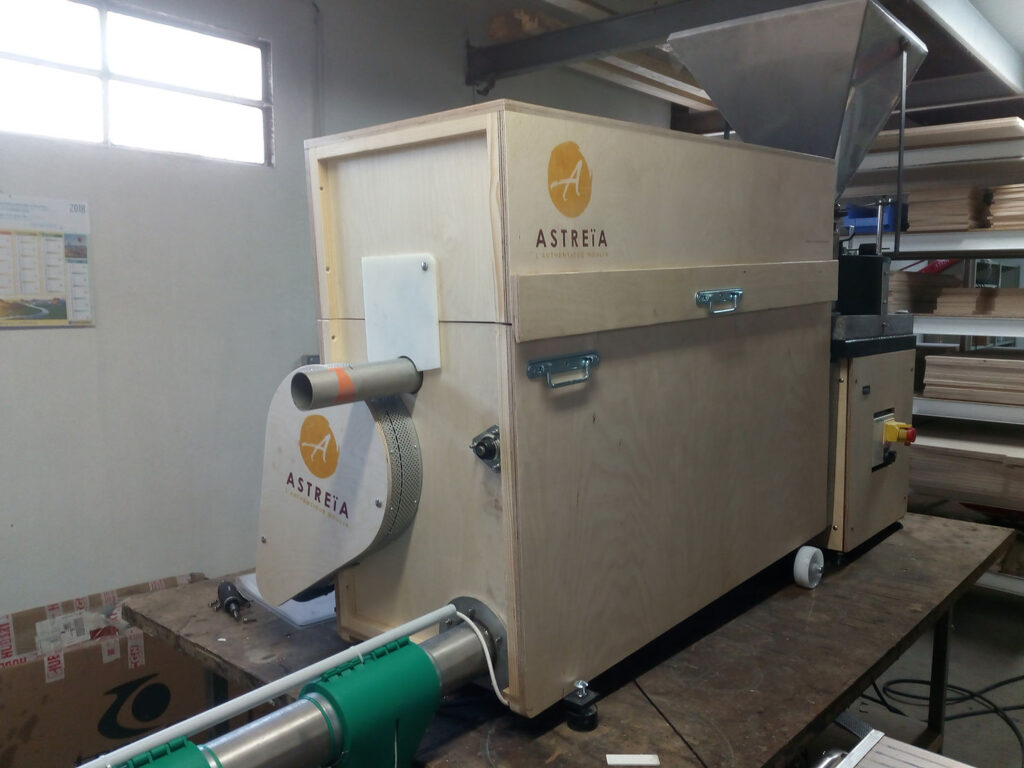The Astrié mill, invented by the Astrié brothers themselves, could be just the thing to help you become self-sufficient in your production. But to make sure you choose the right mill on the market, here are the steps to follow!
Step 1: Which flours will I crush?
In fact, with the Astrié mill, you don’t just crush the seeds, you unroll them between the millstones to preserve all their nutrients. Soft wheat, durum wheat, maize, rye, buckwheat, barley: whatever type of cereal you want to produce, the Astrié mill can unroll it. All that’s needed is for the grain to be dry enough not to clog the millstones.

By adjusting the gap between these wheels, you can also crush smaller cereals such as spelt and small spelt, which are particularly popular with gluten-intolerant consumers.
Simply check the moisture content of your cereal. It has to be dry enough to run through the Astrié mill in the best possible way!
There are also several sieves (the complete mill is always supplied with an equivalent T80 sieve) depending on the type of flour you want to make.
Step 2: What’s my budget?
To find the Astrié mill that’s right for you, it’s essential to define your budget. Because even if it will give you results in the long term, it’s a purchase that represents a real investment.
As these mills are particularly rare, some artisan bakers tend to turn to second-hand Astrié mills. The surprise is that these second-hand mills, which are available more quickly than new mills, are also more expensive. So make sure you set your budget carefully!

When new, you can expect to pay around €8,000 for an Astrié-type mill with a wheel measuring around 50 cm, which is already very efficient. And efficiency is the subject of step number 3!
Step 3: What yield do I need?
There are several sizes of Astrié grinder. Obviously, the size of grinder you choose will depend on the output you need. To help you make the right choice when you buy, let’s look at your options.
Small wheels,
with a diameter of 50 cm, you can produce 15 kilos of flour per hour. With this small model’s extraction and bagging system, you can feed the mill continuously, producing around 300 kilos of flour every 24 hours, or 6 tonnes of flour a month.
With a wide range of grinding wheels,
1 metre in diameter, output doubles. So you can crush just over 30 kilos of flour an hour, and 12 tonnes a month.
So choose your Astrié mill according to the yield you expect to achieve your planned targets, and the quantity of grain and flour you can store on your premises.
Step 4: Am I available to manage my mill at all times?
The choice of your Astrié mill should also be based on your daily activities. If you can be near the mill at all times, you can collect the flour directly from the casing. The flour can then be extracted manually using a simple shovel.

If you’re not available all the time to manage your mill and replenish it, turn to Astrié mills that offer automatic extraction and bagging options. These are very popular, allowing you to leave it running day and night without interruption, while you carry out your other activities. In this way, you optimise both the throughput and the yield of your Astrié mill.
Step 5: Meeting safety and food standards
To ensure that you meet all safety standards, it is essential to make sure that the Astrié mill you choose has been manufactured without any modifications to the original invention by the Astrié brothers.
It’s a guarantee of quality that allows you to really unroll your cereals, keeping only the best, but it’s also a guarantee of safety.
As for the hygiene and food standards to be respected, there are several points to look out for on the Astrié mill you are about to buy. Firstly, the wood used must contain only formaldehyde-free glues. Stainless steel is used to comply with government standards.
Choosing an Astrié mill is no easy task. To make sure you don’t get confused by the options available to you, and to find the one that will meet your real needs in the field, take a look at our team: they’ll be happy to guide you step by step through your purchasing project!


